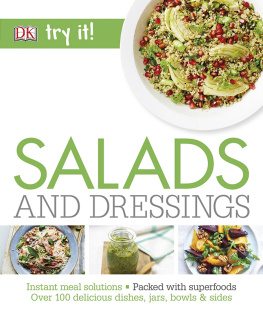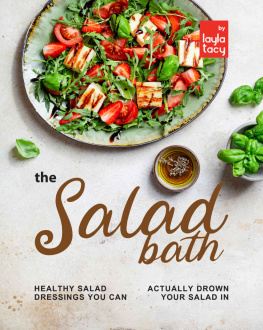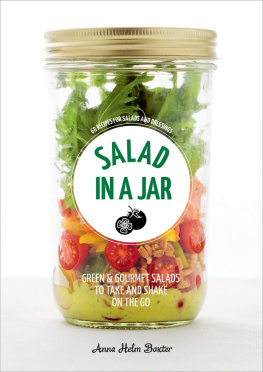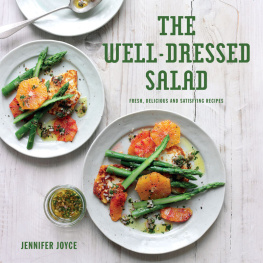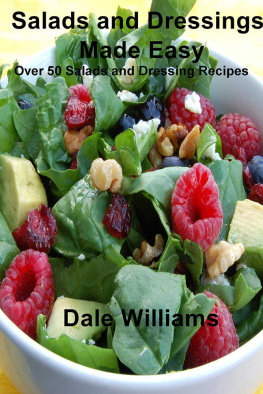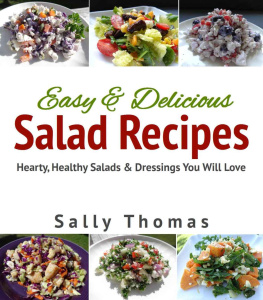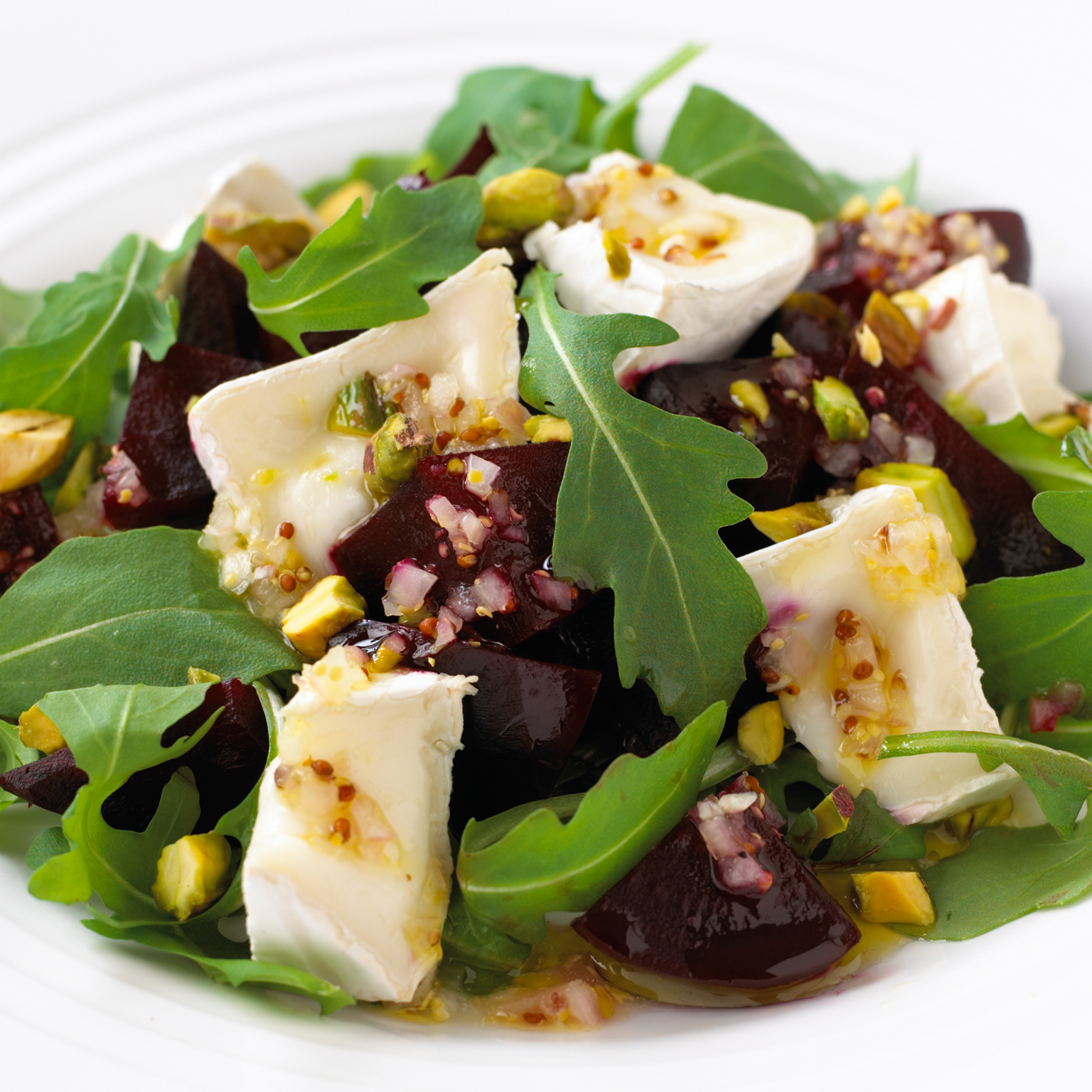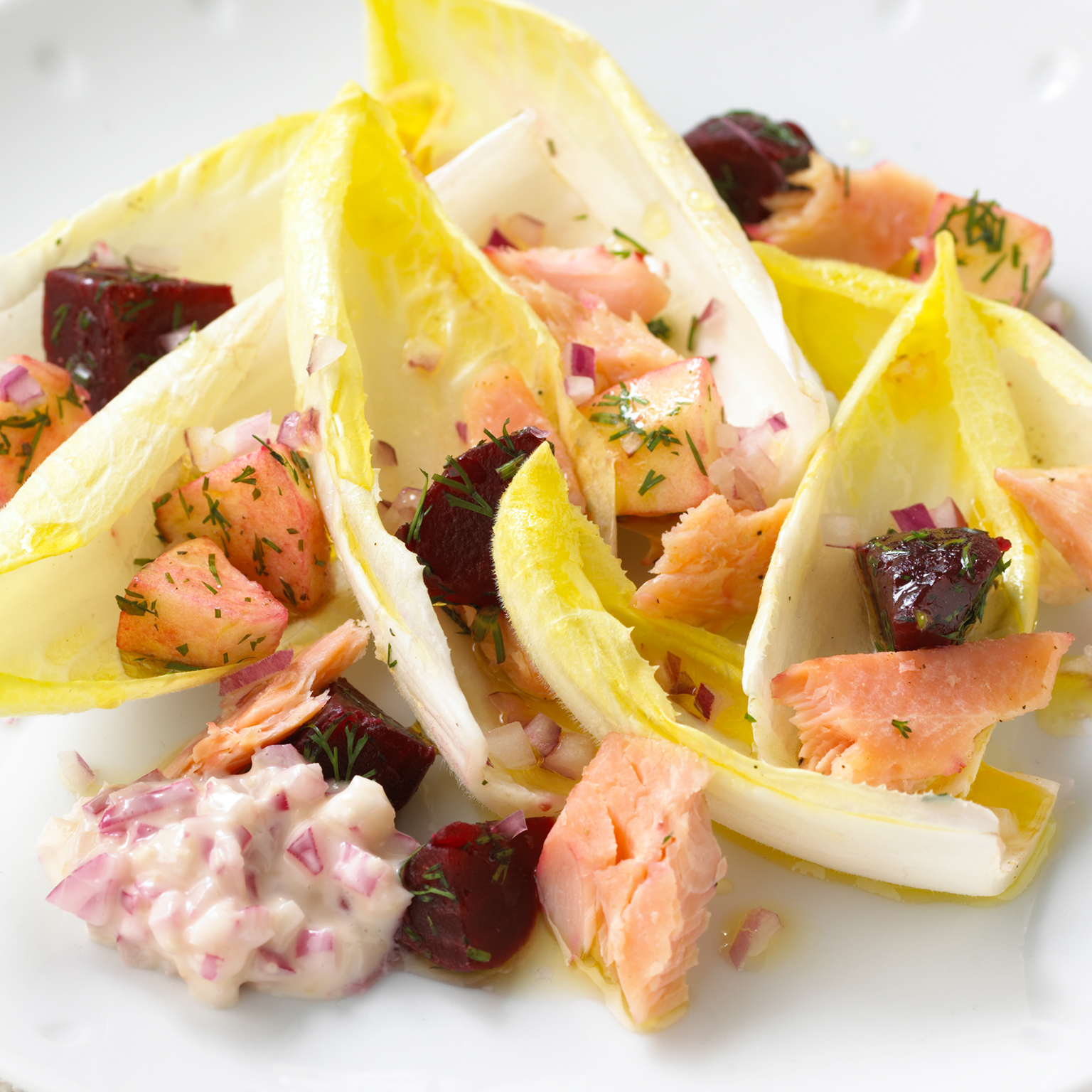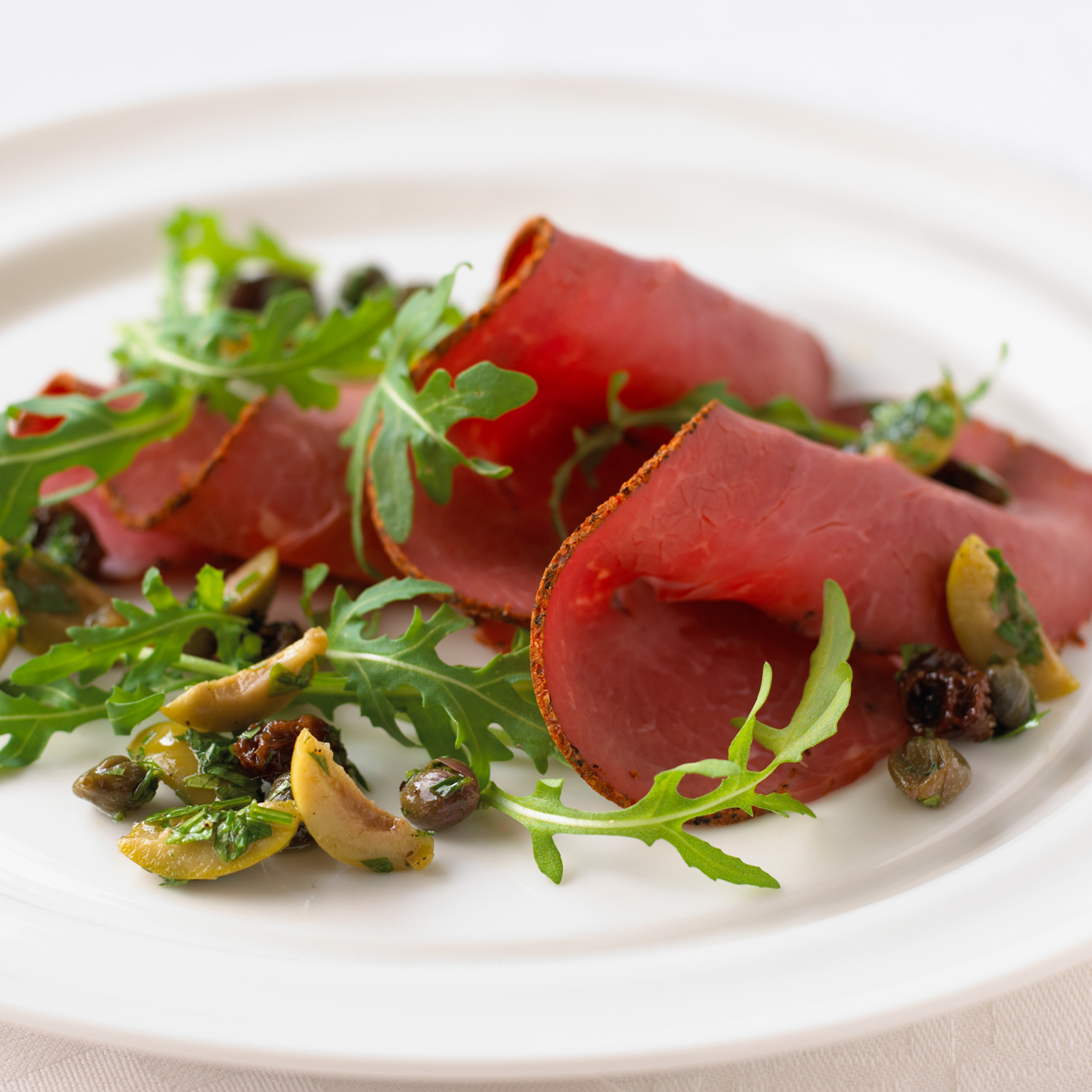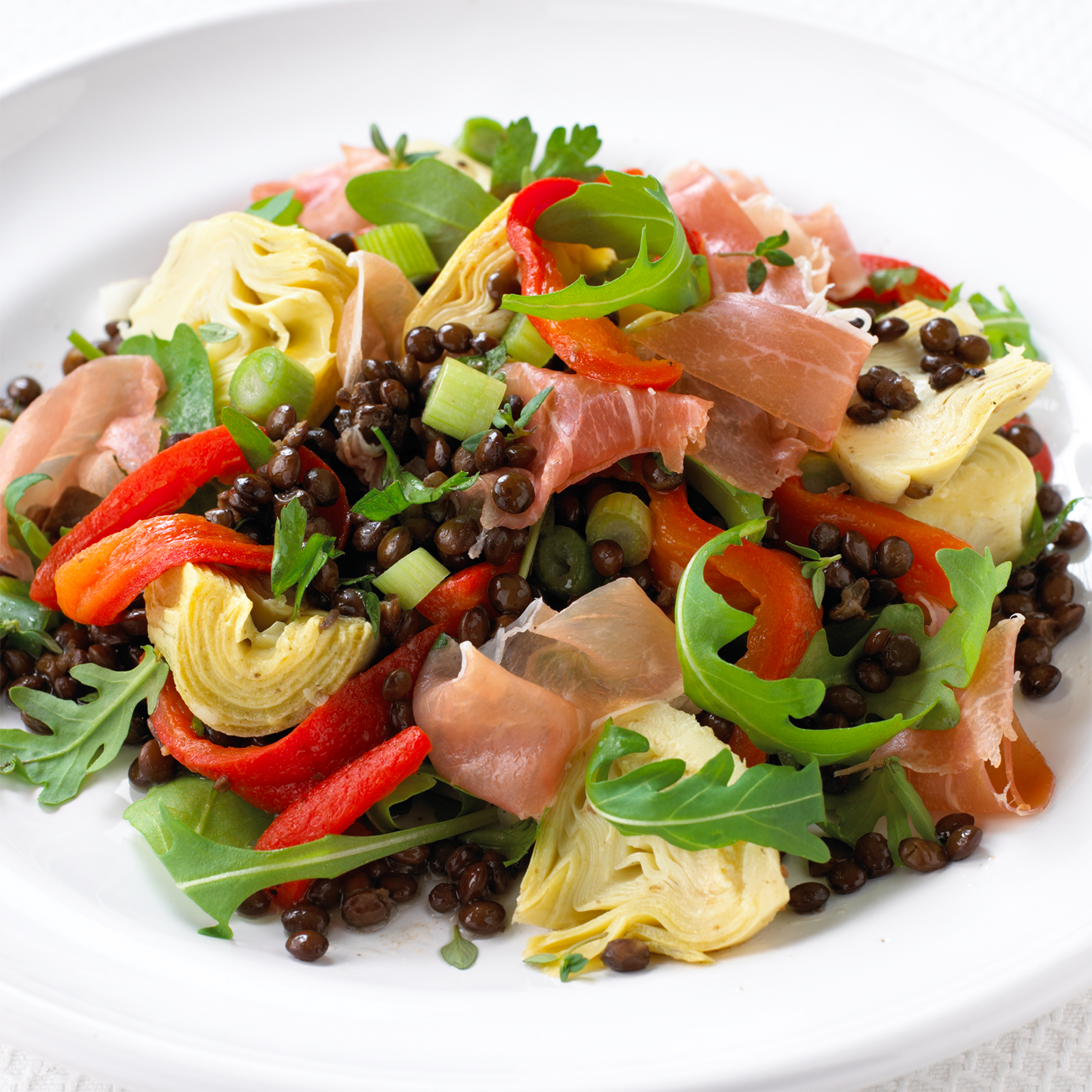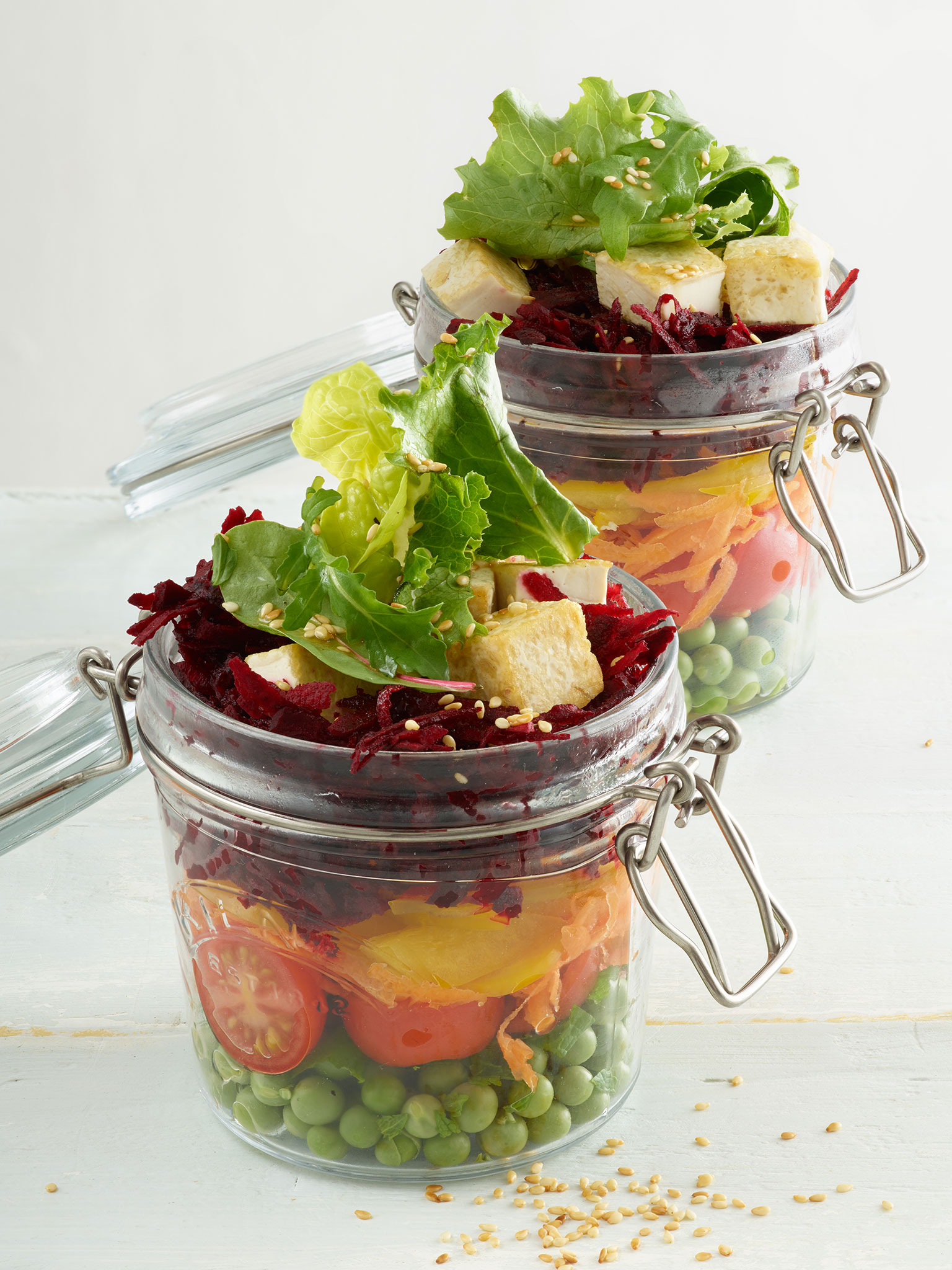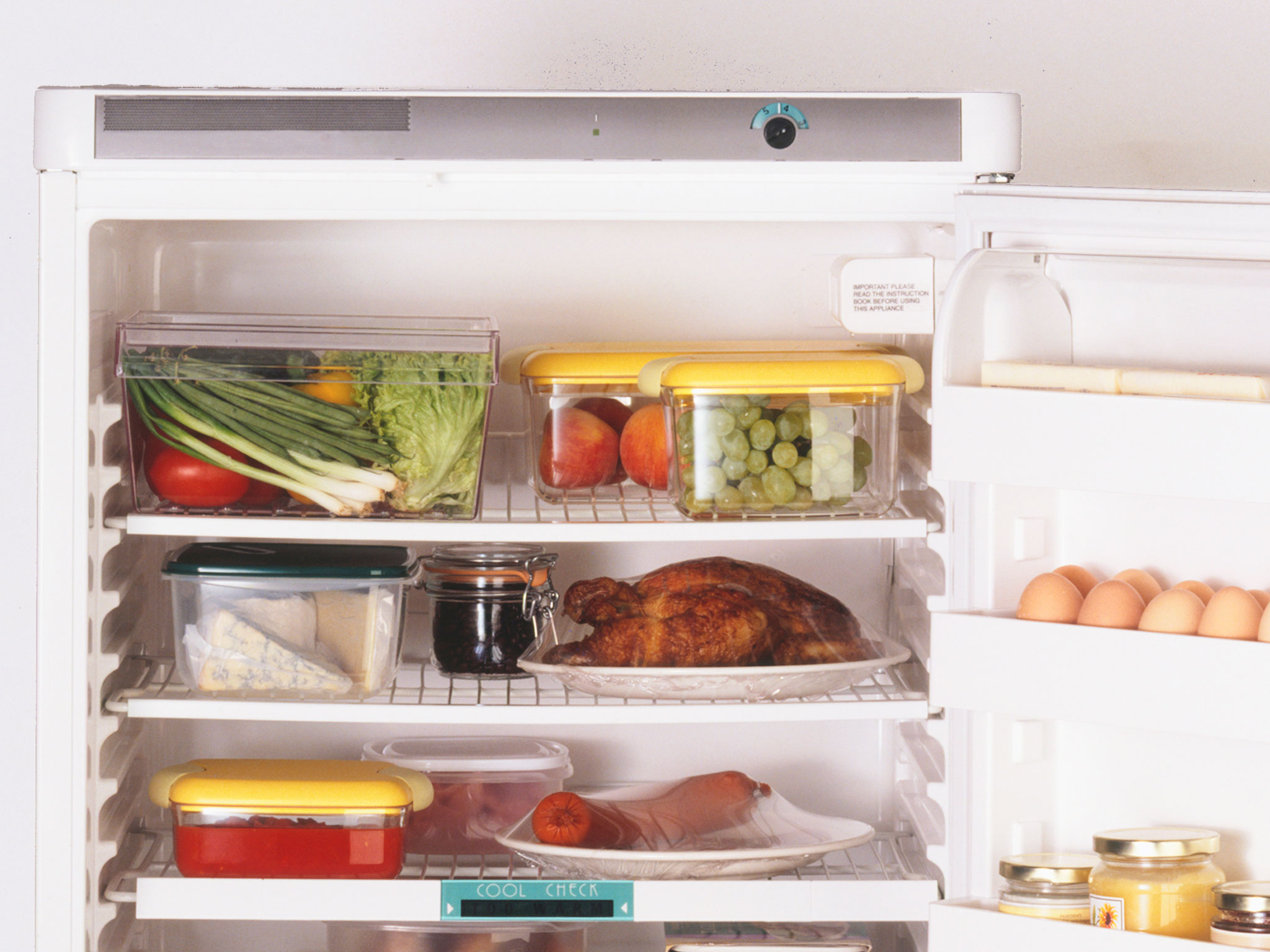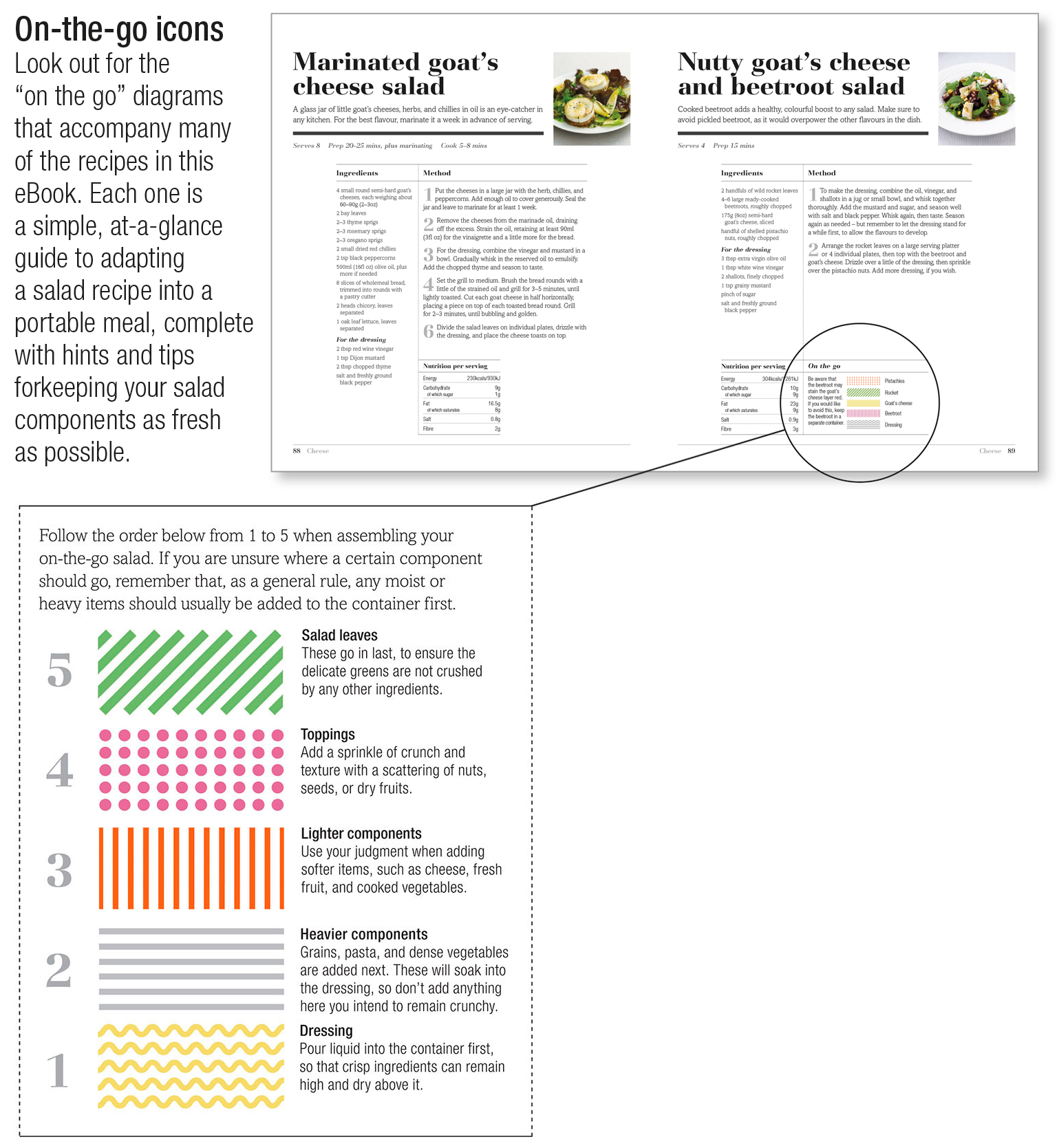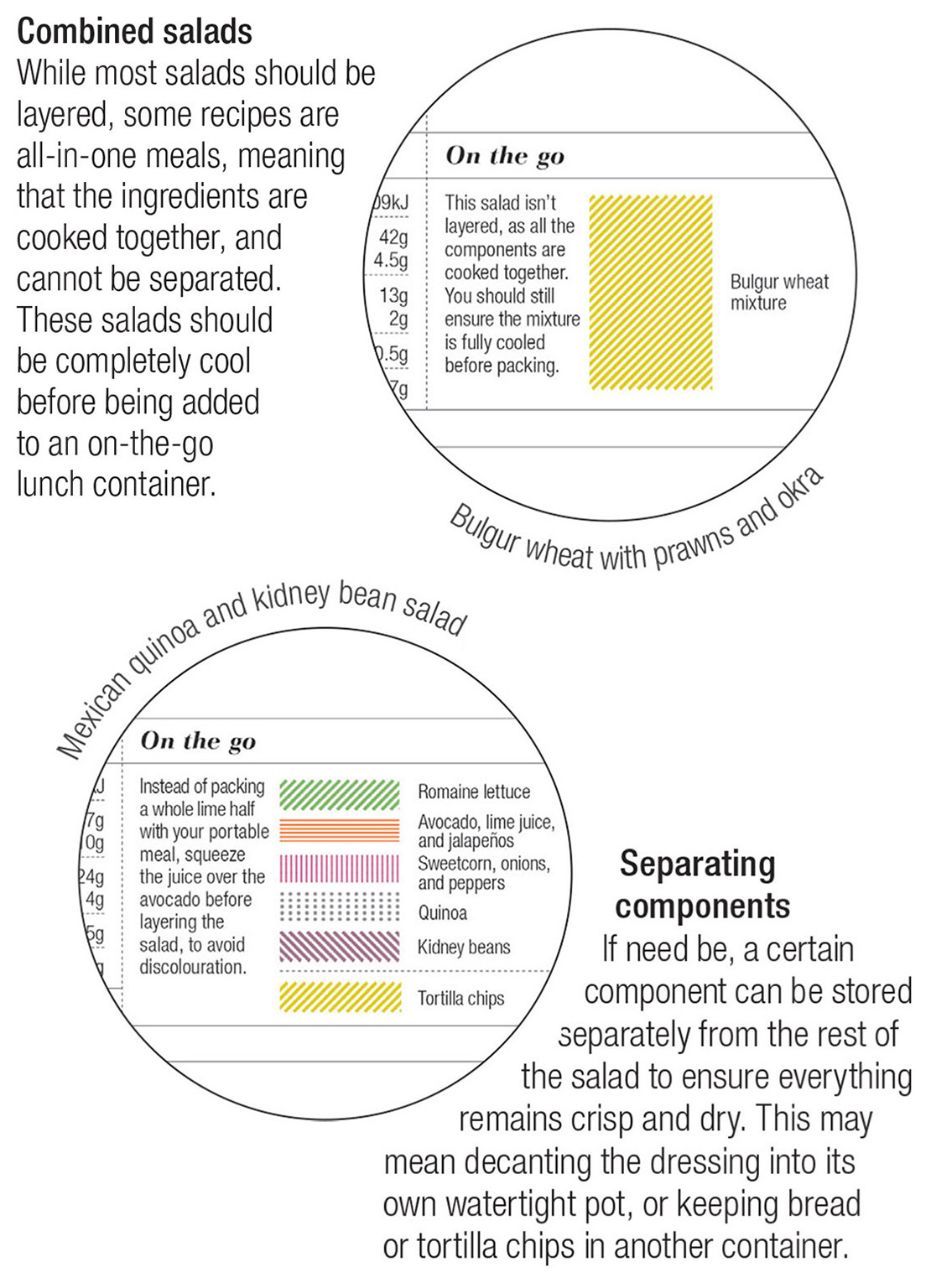Contents
Guide


Introduction
Salads have undergone a remarkable resurgence in recent years. Once a byword for limp lettuce and soggy tomatoes, they have cast off their reputation as rabbit food, and are now recognised as delicious dishes in their own right.
The sheer variety of recipes in Try It! Salads and Dressings proves how versatile and exciting the humble salad can be. Offering up more than 100 dishes, from Middle Eastern tabboulehs to traditional French classics, this eBook offers salad inspiration for every occasion. Light summer lunches stand alongside rustic winter warmers; traditional flavour pairings are complemented by foods and spices you may never have tried before.
All this doesnt mean that the recipes in this eBook are complex or time-consuming. On the contrary, Try It! Salads and Dressings comes complete with tips on creating instant salad meals using no-cook ingredients, as well as advice on turning almost any salad into an on-the-go packed lunch.
Since no salad is complete without a dressing, the last chapter in this eBook provides a handful of dedicated dressing recipes to inspire you, and also shows you how to mix up your own flavour pairings.
Instant or leisurely, simple or decadent, classic or contemporary: a salad can suit any occasion.
Instant salads
When time is short, salads can be the perfect mealtime choice. Stock up on a selection of raw and pre-cooked foods, and youll be able to throw together a nutritious meal in minutes.
Using raw foods
Quick to prepare and serve, raw salad ingredients are far more nutritious than their cooked counterparts. This is because cooking can significantly reduce vitamin and antioxidant levels in many foods, including vegetables and nuts. You do not need to adopt a fully raw diet and forego cooking entirely; incorporating just a few raw items into your meals can provide a great health boost.
Fruit and vegetables
When it comes to produce, fresh is best. Baby varieties of vegetables such as courgettes, carrots, and leeks are ideal, as they tend to be both sweeter and easier to digest. Keep in the fridge, preferably stored in a paper bag, as plastic bags make vegetables sweat.
Try these:
Nuts and seeds
A handful of crunchy chopped walnuts or jewel-like pomegranate seeds can round off any salad dish. Some of the recipes in this eBook call for nuts to be roasted or dry-fried before serving, but you can skip that step and sprinkle them raw over the dish if you prefer.
Try these:
Using pre-cooked foods
Throw together a salad in no time with a selection of pre-cooked foods from the fridge and store cupboard. Smoked fish, cured meats, and rich cheeses provide a particularly special depth of flavour to any meal, while a can of pulses or grains instantly adds bulk and fibre.
Smoked fish
Smoking imparts a delicious woody flavour to fish such as salmon, trout, and mackerel. It can be bought fresh or vacuum-packed, and you only need to flake a little over each salad to make an impact. Vacuum-packed smoked fish should be consumed within 2 days of opening, If bought loose, eat within 4 days.
Try these:
Cooked and cured meats
Buy cooked meats from a delicatessen wherever possible, as these will be fresher and tastier than their pre-packaged counterparts. Salted, dried, and smoked meats are also available from delicatessens. Keep all cooked and cured meat stored in the fridge, well away from raw meat, and use within 35 days.
Try these:
Cheese
Use traditionally made cheeses for salads rather than cheaper packaged cheese the flavour is far richer, meaning you dont need to use as much. If you have time, allow refrigerated cheese to come up to room temperature before serving.
Try these:
Canned grains and pulses
Canned grains and pulses are pre-cooked and stored in liquid, meaning they are ready to eat straight away. Choose varieties that have been stored in water. Once opened, canned grains and pulses should be transferred to a non-metallic container, refrigerated, and used within 2 days.
Try these:
On-the-go salads
Adapting a salad recipe into a portable meal, ready to take with you to work or school, couldnt be easier. Follow these steps to create a lunchbox-ready salad that remains as fresh and crisp as the moment you assembled it.
Layering components
Building an on-the-go salad requires separating ingredients into , then adding them into your on-the-go container in a certain order. Keep liquids and heavy components at the bottom, topped by lighter items that you wish to remain crisp.
Choose your container
Both standard lunchboxes and modern salad jars can be used to contain your on-the-go salad. Whatever you use, ensure it has a watertight, non-corrosive seal and is thoroughly sterilized before use.
Keep it cool
Always keep on-the-go salads chilled, or preferably refrigerated especially if it contains meat or fish. If your office or school does not provide access to a fridge, do not add meat or fish to your salad.
Layering an on-the-go salad
To keep an on-the-go salad fresh and crisp, it is a good idea to layer the components individually in the container, mixing them up only when you are ready to eat. Follow the steps below to adapt your favourite salad recipes into portable meals.

